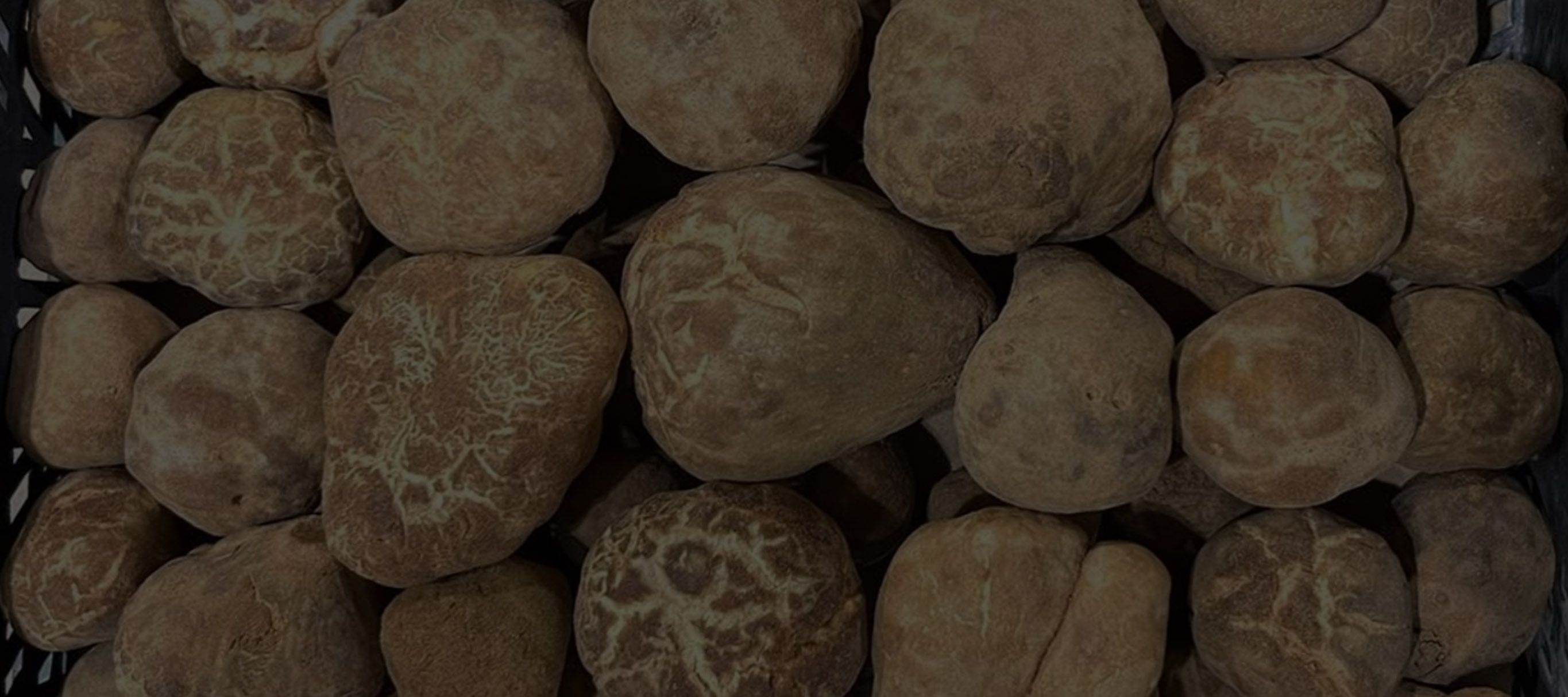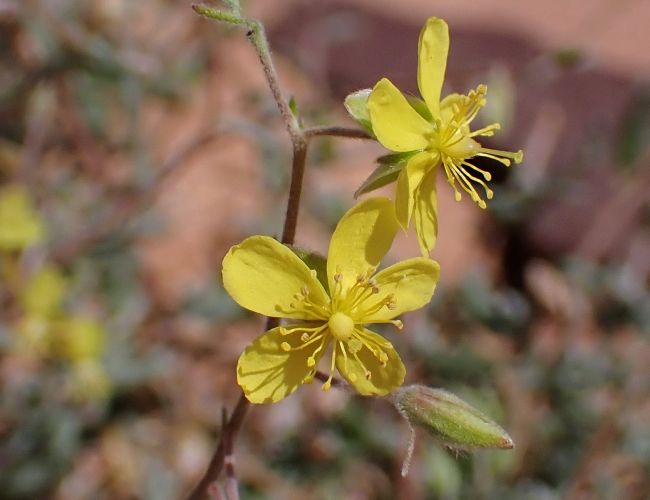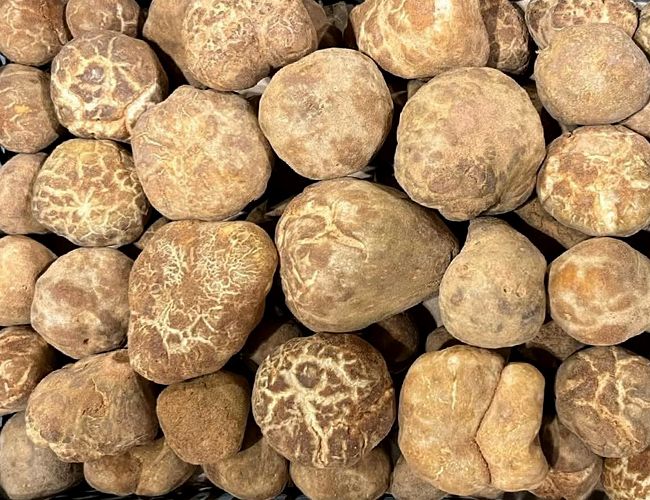

Unearthing Truffles Beneath the Sand
Words by Sofia Levin
Last updated 18.07.2025
You’ve heard of prized black and white truffles dug from the earth in Europe and Australia, but in the desert, something more elusive emerges after the rain.
Known as fagga in Arabic, desert truffles belong to the Terfeziaceae family and grow wild across the Middle East and North Africa. In Qatar, their season begins with the first thunderstorms in November or December, when the sand drinks in the rain and grows hidden treasures just below the surface.
Come December or January, Doha’s Souq Waqif hosts its annual truffle exhibition and auction, where up to 30 tonnes of fagga change hands, some fetching thousands of riyals. But if you want to shop like a local, head to the Omani Souq between January and March, where you can barter over the desert’s bounty.


Fagga can grow larger than a fist and resemble knobbly potatoes, some gnarled and others smooth. Depending on the variety, their texture ranges from dense to slightly spongy, and the flavour has been likened to raw mushroom with nutty, earthy undertones. They are famously hard to clean, with grains of sand clinging to each crevasse. Traditionally foraged by Bedouins for millennia, fagga were once roasted over open flames or boiled in camel milk. These days, people add them to traditional stews (particularly machboos), serve them raw and sliced in salads, and sauteed them in butter.
Desert truffles are far less known than their European cousins, and less costly. Still, they command anywhere from QAR400 to QAR3,000 per kilogram, prized as both a delicacy and traditional medicine (said to help with everything from back pain to libido).
In Qatar, fagga grow a few inches beneath the sand, drawing nutrients from the root systems of desert sunflowers and rock rose shrubs. What makes them even more special is that they can’t be cultivated, only foraged. Unlike the truffle hunting dogs use in Europe, here it’s the trained eye of the forager that leads the way, searching for cracked earth and particular plants.
As the Michelin Guide expands its footprint in the Middle East – including the first Qatar guide in 2025 – it will be interesting to see if chefs begin to serve traditional ingredients like the desert truffle on tasting menus. Although fagga is nothing new in this part of the world, this luxury ingredient could gain an international reputation in the hands of chefs hungry to celebrate Qatari terroir.
Join the Eat Curiously Movement
Subscribe to the food newsletter that goes deeper.
